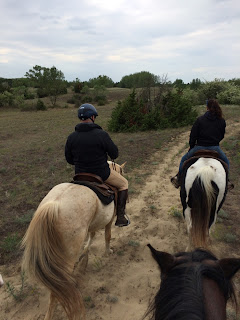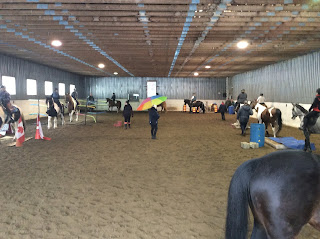A day (or week) on the ranch

Just arrived in the Hungarian grasslands to roam on horseback for a few days respite from my city wanderings. I was greeted by a big hunk of a mare who was more spry than her size might have you imagine. Lopes to a kiss, jogs to a cluck. Sit back, relax. I’ve never been one to go on riding vacations because Im a one-horse woman (and my horse is a one-woman steed) and Ive never enjoyed riding other peoples horses. But necessity is the mother of invention.... and five weeks away from the smell of leather and horses was too big a burden to bear. So now I am in a lovely ranch in the grasslands of Hungary while my husband toils away in Budapest. The group is quite eclectic, from Sweden, UK, France, Switzerland, and riding habilities vary. Ive been allocated to the fast group. ;-) Four of us took off down the path to the trails of the national park and bird sanctuary and I must say I was surprised that our first canter started on a downhill slope. Anyways. Everything was as safe as can b





